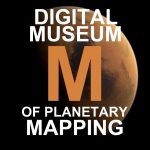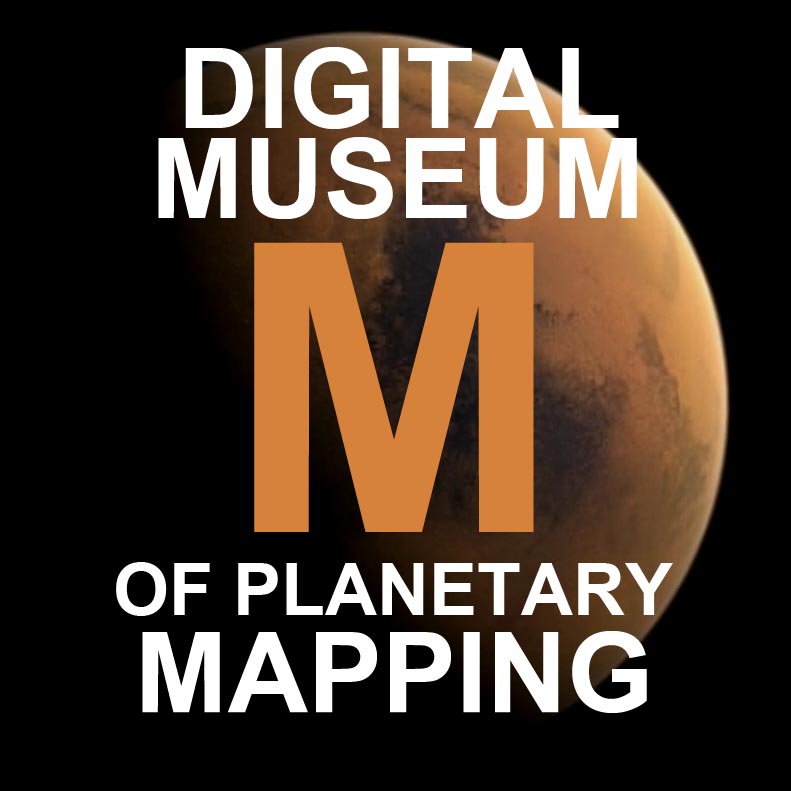Pronunciation supplement for the IAU Planetary Nomenclature Gazetteer by ICA Commission on Planetary Cartography
Please note: IAU WGPSN :“ there are many variations on the pronunciation of names, and the IAU does not endorse any particular one.”
In this guide we are not suggesting official pronunciations, only provide one possible – and existing – form of pronunciation for those who would like to know the “original” form of a particular name used in the Gazetteer. But sometimes pronunciations of toponyms are made official:
The pronunciation of Arkansas was made official by an act of the state legislature in 1881, after a dispute between the two U.S. Senators from Arkansas. One wanted to pronounce the name/ɑrˈkænzəs/ ar-KAN-zəs and the other wanted /ˈɑrkənsɔː/ AR-kən-saw (http://www.arkleg.state.ar.us/assembly/ArkansasCode/0/1-4-105.htm).
1. Introduction
The present day official Planetary Nomenclature Gazetteer is maintained for IAU by personnel of the USGS on their website [1]. It reflects decisions by IAU Working Group for Planetary System Nomenclature. There are needs from various parts of the planetary scientist and planetary cartographer community which this database does not meet, therefore it is necessary to establish extra databases in addition to this official one which can provide data types that are not present at the USGS website.
2. The International nature of the planetary nomenclature system
The presently used guideline for naming topographic planetary surface features have been settled in the early 1970s when – in response to the need for the first set of new topographic names in the Space Age (on Mars) – Carl Sagan and his colleagues have stated that it is important to make sure that the end result [of the new nomenclature system] “will be a nonprovincial distribution of nationalities, epochs, and occupations – a distribution that our great-grandchildren can be proud of” [2]. This laid down the international character of planetary nomenclature which is also supported by the fact that descriptor terms are in Latin and specific parts of placenames are in the language of origin or in a neutral Latin form. Although this principle is sometimes offended (for example in the case of some names of Io) in practice, it is still a governing rule of planetary nomenclature. Since some – and in the future, presumably more and more – names originate from nations that use a non-Latin writing system, transliteration or transcription of names should be unambiguous and reversible. It is also a major question why would all nations of the Earth accept Latin or Romanized forms of these names being the only, official forms, once the principle of planetary nomenclature is to be truly international, not placing any nations ahead of any other. It does not seem to be right for example to have a Chinese name written in Latin characters in a planetary map published for use by Chinese schoolchildren. It would first be necessary to define which transcription / transliteration system IAU uses in any particular language when they form the official Romanized version. This definition is now absent in the Gazetteer rules. Secondly it would be needed that those countries/nations who wish, could use the planetary nomenclature system in their writing system (Chinese, Japanese, Arabic, Russian etc). In other words: writing system should be considered to be equally capable of transmitting planetary surface feature names. This is the case now for terrestrial names – which is not regulated by one single commission – but not for planetary names where only one official form exists. It is now a tendency to formulate one single internationally accepted and used form for any geographic name in the Latin alphabet, to make international communication easy and unambiguous, especially in international trade. However, for planetary names, they belong to all nations, therefore their use in all nations’ own languages should be equal. Some form of regulation is needed: this would allow only one form in any particular writing system.
During the process of localizing planetary nomenclature, it may be needed to translate (or to define local equivalents of) descriptor terms. It is a natural process: this “work” have been done in several countries by popular science authors, cartographers, internet users, however, this usually results in multiple forms for the same descriptor term. A local regulation is therefore necessary. Such recommendation has been published for the Hungarian language in 2010 [3,4]. Such system has also been established for stratigraphic nomenclature [5].
3. A Pronunciation Guide
A step towards this goal is to create a database of the pronunciation of planetary surface names since transcription – a method of conversion between writing systems – is based on phonetic conversion between different languages (transliteration is based on letter-to-letter conversion). The Pronunciation guide is, therefore, being established by the ICA Commission of Planetary Cartography. The Guide contains audio files (later the phonetic notations using the International Phonetic Alphabet). These files have been recorded by native speakers of the particular language. Since planetary names are representing several languages which a reader does not speak, it may be useful by anyone from TV news readers to astronomy teachers etc. who have to (or should) say planetary names aloud. Pronunciation of most names are unequivocal, however, some historic, mythological names have made problems even for native speakers. In the case of Latin and Ancient Greek languages, we have consulted university teachers of Latin and Greek and followed pronunciation rules of the Medieval Latin (Latinitas Mediaevalis) which may be closest to the Latin used by those astronomers who first named features on other planetary bodies in Latin, when Latin was the language of international and scientific communication.
4. Current status of the database
The database currently contains approx. 550 audio files, i.e. names recorded by native speakers. These feature names represent all larger features: the smaller ones are not included. The audio files contain the specific part of names. Descriptor terms are in Latin, therefore we have created separate audio files for them. Its basic part is using Medieval Latin pronunciation, but since it is problematic – even Medieval Latin was pronounced differently in various parts of Europe, depending on the sound of the locally used language – we have recorded “Medieval Latin” pronunciation of descriptor terms by speakers of various European languages.
The database is in continuous development. It is planned to be published online during the year 2010 on the website of ICA’s Commission on Planetary Cartography. The commission’s new projects [6] will develop additional elements which will supplement IAU’s official Gazetteer of Planetary Nomenclature
References [1] Jim Mosher: IAU Planetary Gazetteer (glossary entry) URL: http://the-moon.wikispaces.com/IAU+Planetary+Gazetteer Accessed : 2010 May [2] Sagan, Carl 1976: On solar system nomenclature Icarus, Volume 27, Issue 4, April 1976, Pages 575-57 [3] Hargitai, Henrik; Kozma Judit, Kereszturi Ákos, Bérczi Szaniszló, Dutkó András, Illés Erzsébet, Karátson Dávid, Sik András: Javaslat a planetológiai nevezéktan magyar rendszerére [Recommendation for a planetary nomenclature system in Hungarian language; in Hungarian]. Meteor csillagászati évkönyv [Meteor Astronomy Yearbook] 2010 pp. 280-302. [4] Hargitai H.- Kereszturi Á.: Javaslat magyar bolygótudományi szaknyelvi norma létrehozására [Suggestions for a Hungarian language standardized planetary nomenclature and terminology, in Hungarian] Geodézia és Kartográfia LIV, 2002/9, pp. 26-32. [5] Hargitai Henrik; Császár Géza, Bérczi Szaniszló, Keresztúri Ákos: Földön kívüli égitestek geológiai és rétegtani tagolása és nevezéktana [Geological and stratigraphical units and the nomenclature of extraterrestrial planetary bodies], Földtani Közlöny 138/4 2008 [6] Kira B. Shingareva, Jim Zimbelman, Manfred F. Buchroithner and Henrik I. Hargitai: The Realization of ICA Commission Projects on Planetary Cartography Cartographica, vol. 40, no. 4 /Winter 2005 pp 105-114
Publication: Hargitai, H.; Kereszturi, Á. Towards the development of supplements to the Gazetteer of Planetary Nomenclature European Planetary Science Congress 2010, 20-24 September in Rome, Italy. http://meetings.copernicus.org/epsc2010, p.865 EPSC Abstracts
Vol. 5, EPSC2010-865, 2010
Contributors for the Pronunciation Guide
[Latin American Spanish] Joel Poblete Morales, Chile
[Medieval Central European Latin] Tamás Furka, Hungary
[Asutralian English] William Cartwright, Australia
[Russian] Tamara Vereshchaka, MIIGAiK, Russian Federation
[British English] Hamish Buchan, ELTE, Hungary – UK
[Japanese] Uchikawa Kazumi, ELTE, Hungary – Japan
[French] Krisztina Horváth, ELTE, Hungary
[Dutch] Judit Gera, ELTE, Hungary
[German] Andrea Meixner, ELTE, Hungary – Germany
[Norse] Svein Åråsvåg, ELTE, Hungary – Norway
[Hungarian] Eszter Botos, Hungary
Edited by Henrik Hargitai (ELTE: Eötvös Loránd University)
Links
Pronouncing Dictionary of the Moon by Maurice Stewart
Links (IPA)
http://dictionary.reference.com/
http://fgasper.freeshell.org/latin_engine/

